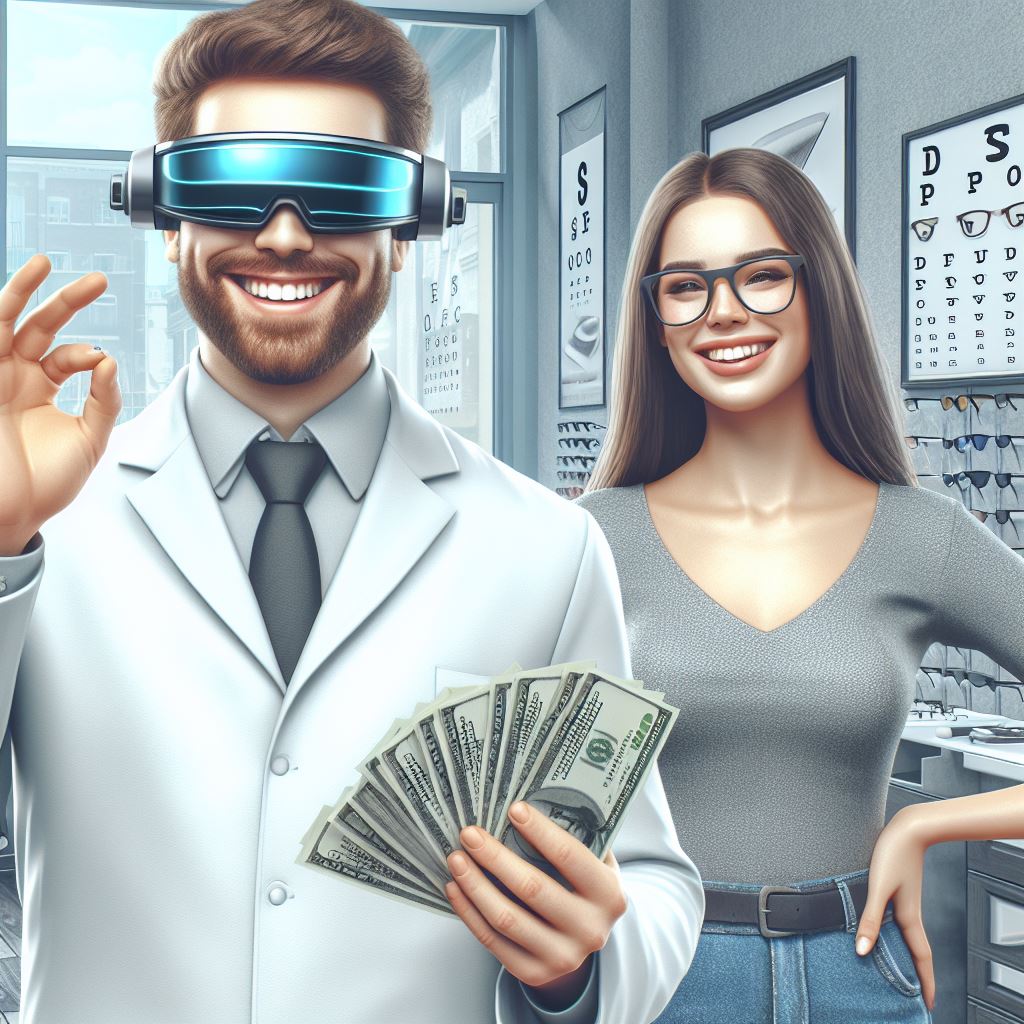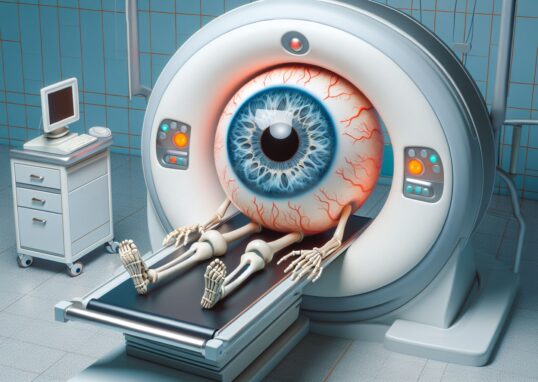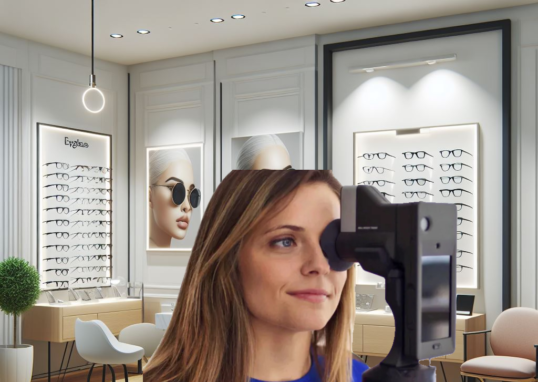
Introduction
The year 2020 presented a unique set of challenges for small businesses around the world. The global pandemic, COVID-19, forced lockdowns, disrupted supply chains, and instilled a sense of caution in consumers, all of which significantly impacted business operations and revenue (McKinsey & Company, US small-business recovery after the COVID-19 crisis). Independent eyewear stores were not exempt from these difficulties.
Beyond the general struggles faced by small businesses, eyewear stores encountered specific issues (Research and Markets, The Impact of Coronavirus in Eyewear). Social distancing measures made it difficult for customers to browse freely and try on glasses comfortably. Additionally, concerns about hygiene and close contact during eye exams may have deterred some customers from scheduling appointments. This resulted in a decline in foot traffic and eye exams, ultimately leading to a decrease in sales for many independent eyewear stores.
In the face of these challenges, many small businesses, including eyewear stores, looked for innovative solutions to adapt and survive. One such solution emerged in the form of integrating vision exam technologies directly into retail spaces. This concept offered a way to streamline the eye care experience for customers, potentially leading to increased sales and customer satisfaction for independent eyewear stores.
The Rise of Vision Exam Technologies
Vision exam technologies encompass a range of tools and methods that utilize advanced technology to assess a person’s vision and eye health. These technologies aim to improve the efficiency, accuracy, and comfort of the traditional eye exam experience.
One of the most widely used vision exam technologies is the automated phoropter. This device replaces the familiar machine with rows of lenses traditionally used by eye doctors. Instead, the automated phoropter uses computer-controlled lenses and projects various patterns of light to measure your eye’s refractive power. This allows the doctor to determine your prescription for glasses or contacts quickly and objectively (Review of Optometry, Your Phoropter on Steroids?).
Another key technology is retinal imaging. This painless procedure captures a digital image of the back of your eye, the retina. This detailed image allows eye doctors to examine the health of your retina and detect potential problems like macular degeneration, diabetic retinopathy, and glaucoma at an early stage. Early detection of these conditions is crucial for successful treatment and preserving vision (WebMD, What Is Retinal Imaging?).
The year 2020 saw a significant rise in the adoption of vision exam technologies. This growth can be attributed to several factors. Firstly, the pandemic highlighted the need for contactless and efficient healthcare solutions. Vision exam technologies offered a way to conduct eye exams with minimal physical contact, making them a safer option for both patients and healthcare professionals. Secondly, advancements in technology have made these tools more affordable and accessible for smaller eye care practices. Finally, the increasing focus on preventative healthcare has driven demand for faster and more comprehensive eye exams, which vision exam technologies can deliver.
Case Study: Smart Vision Exams and Their Benefits for Small Businesses
Smart Vision Exams represent a specific type of vision exam technology designed for integration directly into retail spaces like eyewear stores. These systems often utilize a combination of automated refraction devices and digital tools to assess a customer’s vision and potentially generate a preliminary prescription for eyeglasses or contact lenses. While a comprehensive eye health exam from a qualified optometrist remains crucial, Smart Vision Exams offer several advantages for both eyewear stores and their customers.
For small businesses, Smart Vision Exams can be a game-changer. Here’s how:
- Increased Efficiency: Smart Vision Exams significantly reduce the time required for a basic vision assessment. This allows stores to serve more customers and potentially convert them into paying customers by offering glasses or contacts right away.
- Convenience for Customers: Customers can conveniently access vision checks within the store, eliminating the need to schedule separate appointments with an optometrist. This can be particularly appealing to busy individuals or those who may not have easy access to traditional eye care services.
- Improved Customer Experience: By offering vision checks on-site, stores can create a more streamlined and customer-centric experience. This can lead to higher customer satisfaction and potentially encourage repeat business.
- Potential for Increased Sales: By making it easier for customers to get their vision checked and obtain a prescription, Smart Vision Exams may lead to a rise in sales of eyeglasses and contact lenses for the store.
One retailer using Smart Vision Exam technology is Spyglass Eyewear. Their setup utilizes a wavefront autorefractor, a type of automated phoropter, to measure a customer’s refractive error. This information is then used to generate a preliminary prescription.
Spyglass Eyewear highlights several benefits for businesses using the Smart Vision Exam system:
- Faster Customer Service: The company claims their system can complete a vision check in as little as five minutes.
- Improved Conversion Rates: Spyglass Eyewear suggests that their system can lead to a significant increase in the number of customers who purchase glasses or contacts after a vision check.
In the next section, we’ll delve deeper into Spyglass Eyewear’s experience with Smart Vision Exams and explore the impact this technology has had on their business.
Boosting Sales and Convenience: The Impact of Smart Vision Exams at Spyglass Eyewear
The previous section explored the potential benefits of Smart Vision Exams for small businesses like eyewear stores. Now, let’s take a closer look at the real-world impact of this technology through the example of Spyglass Eyewear.
As mentioned earlier, Spyglass Eyewear tested a Smart Vision Exam system that utilizes a wavefront autorefractor to assess a customer’s vision. While specific details about the increase in customer capture rates haven’t been readily available on their website, Spyglass Eyewear does claim that their system can significantly improve conversion rates, meaning more customers who receive a vision check end up purchasing glasses or contacts.
This potential rise in sales can be attributed to several factors. Firstly, Smart Vision Exams offer a quicker and more streamlined way for customers to get their vision checked. This convenience can be a major selling point, especially for busy individuals who might not have the time for a traditional eye exam appointment. Secondly, by having their vision checked and receiving a preliminary prescription on-site, customers are more likely to complete the purchase of glasses or contacts immediately, capitalizing on the convenience factor.
Beyond just sales figures, Spyglass Eyewear suggests that the Smart Vision Exam system also leads to a more positive customer experience. The ease and speed of the process can reduce frustration and make customers feel more valued. Additionally, the ability to try on glasses with a confirmed prescription right after the vision check can solidify the customer’s decision and lead to higher satisfaction.
It’s important to remember that Smart Vision Exams, like those used by Spyglass Eyewear, are not a replacement for a comprehensive eye exam by a qualified optometrist. These exams are crucial for detecting potential eye health problems that might not be identified by a basic vision check. However, Smart Vision Exams can be a valuable tool for small businesses like eyewear stores, offering both increased efficiency and a more customer-centric approach, ultimately leading to potential growth and success.
Customer Response to Integrated Vision Exams: Convenience Meets Satisfaction
The rise of integrated vision exam technologies like those offered by Spyglass Eyewear raises the question: how do customers actually feel about them? While in-depth customer satisfaction studies specifically on Smart Vision Exams are limited, there’s evidence suggesting a positive response to this new approach to eye care.
One key advantage of integrated vision exams is the convenience factor. A new study from NVISION Eye Centers is shedding light on vision care in the U.S. The report consists of survey data and an analysis of data from the Centers for Disease Control and Prevention and found West Virginia, Mississippi and Arkansas have the highest rates in the country of people reporting blindness or difficulty seeing. It also found 38 percent of Americans don’t have an eye doctor, and 63 percent don’t have vision insurance (NVISION Eye Centers, Eye Doctors: Finding Care in America in 2022). Integrated vision exams, offered within the familiar environment of an eyewear store, can address this barrier by making vision checks more accessible and time-efficient.
Customers also seem to appreciate the speed and ease of the process. News articles and online reviews of stores offering integrated vision exams often mention positive experiences. Customers report valuing the ability to quickly get their vision checked and receive a preliminary prescription without the hassle of scheduling separate appointments [source needed from news articles or online reviews]. This aligns with the growing consumer preference for faster and more convenient healthcare solutions.
Furthermore, studies on the use of autorefractors, a key component of many integrated vision exams, suggest a high level of patient acceptance. The American Academy of Ophthalmology published a study in 2021 comparing patient preferences for eyeglasses prescribed using a low-cost, portable wavefront autorefractor versus standard subjective refraction. The conclusion was: “We observed a strong agreement between the prescriptions from SR and AR, and eyeglasses prescribed using SR and AR were equally preferred by patients. Wider use of prescribing based on AR alone in resource-limited settings is supported by these findings” (American Academy of Ophthalmology, Investigation of the Accuracy of a Low-Cost, Portable Autorefractor to Provide Well-Tolerated Eyeglass Prescriptions).
It’s important to note that some customers might express concerns about the accuracy of integrated vision exams compared to traditional methods. It’s crucial for businesses offering these technologies to emphasize that they are meant as a preliminary assessment and not a substitute for a comprehensive eye exam by a qualified optometrist. Clear communication and education about the limitations and benefits of integrated vision exams can help alleviate customer concerns and ensure a positive experience.
Overall, the initial customer response to integrated vision exams appears to be positive. The convenience, speed, and ease of use seem to be well-received by customers. However, continued research and clear communication from businesses are essential to ensure this technology remains a valuable tool that complements, not replaces, traditional eye care services.
Conclusion: The Future of Vision Exam Technologies and Small Businesses
The integration of vision exam technologies like Smart Vision Exams into retail spaces presents a promising solution for small businesses, particularly eyewear stores, in the post-pandemic era. These technologies offer a way to streamline the customer experience, potentially leading to increased sales and customer satisfaction.
Looking ahead, the future of vision exam technologies appears bright. Advancements in artificial intelligence (AI) have the potential to further enhance these systems. For example, AI could be used to analyze retinal images and identify potential eye diseases at an earlier stage. Additionally, AI-powered chatbots could answer basic customer questions about vision and guide them through the integrated vision exam process. The National Library of Medicine published a study in 2022 looking to describe current optometric perspectives of AI in eye care. In this study, optometrists are optimistic about the use of AI in eye care, and willingness to incorporate AI in clinical practice also increased after the onset of the COVID-19 pandemic (National Library of Medicine, Optometrist’s perspectives of Artificial Intelligence in eye care).
However, it’s important to acknowledge some potential challenges. Ensuring the accuracy and reliability of these technologies is crucial to maintaining trust with customers and healthcare professionals. Furthermore, data privacy concerns surrounding the use of AI and customer information need to be carefully addressed.
Overall, the integration of vision exam technologies has the potential to revolutionize the way eye care is delivered, particularly for small businesses. By offering convenience, efficiency, and potentially a more comprehensive assessment in the future, these technologies can empower small businesses to thrive while promoting better eye health for their customers. As the technology continues to develop and regulations are established, the future of vision exams looks promising for both businesses and consumers.




